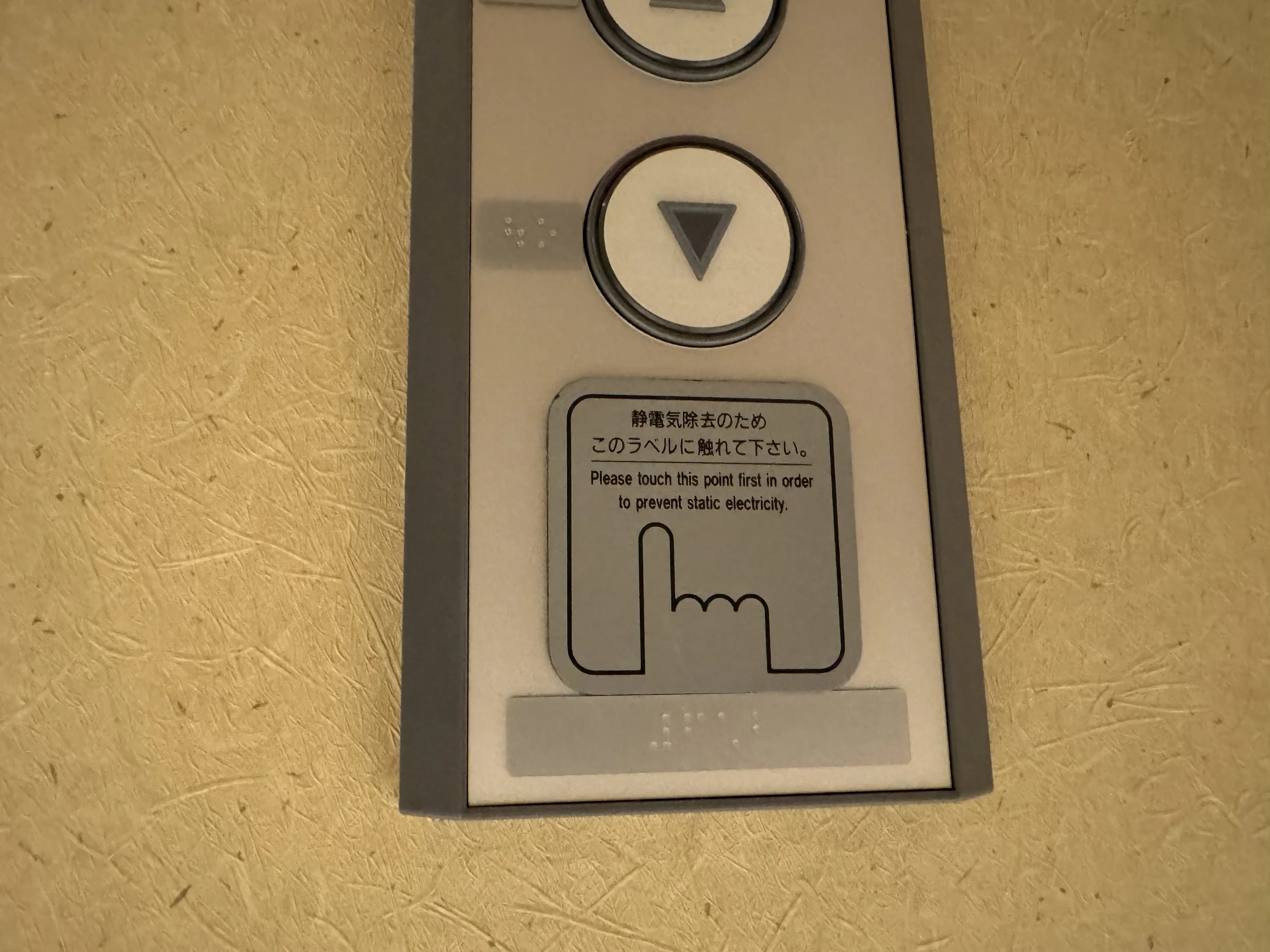Japan & Design
Thoughtful Design in Everyday Spaces: Insights from Japan
When I traveled to Japan, I was struck by how seamlessly thoughtful design was integrated into everyday life. From public restrooms to transportation, small but significant design details made my experience as a visitor smoother, more comfortable, and more enjoyable. As a designer, these subtle touches left a lasting impression on me. They showcased how even the smallest considerations can have a large impact on usability, accessibility, and overall experience.
One of the first things I noticed was in the bathroom: a mirror with a heated panel strategically placed above the sink. After a hot shower, while the rest of the mirror was fogged over, this one section remained clear. It’s the type of feature you wouldn’t think to ask for—but once you experience it, you can’t help but appreciate the convenience. It saves you from having to wipe the mirror and ensures the area you need most is always usable. This tiny detail showed me how forethought in design can transform an ordinary task into a seamless experience.
Anti-fog bathroom mirrors
In almost all of the restrooms, I encountered smart toilets, which offered an entirely different level of thoughtfulness. The heated seats were an immediate comfort, especially during colder months. They came equipped with in-built bidets, adding a layer of hygiene and convenience. But what truly stood out was the attention to privacy. Some of the public restrooms featured an option to play ambient noise, which masked any sounds while using the toilet. This consideration for people’s comfort, ensuring that no one felt self-conscious, was a perfect example of how design can address not only functional but also emotional needs.
In a similar vein of accessibility and convenience, I observed the elevators. These weren’t just your average lifts. They had railings and buttons placed lower on the side panel, making them easily reachable for people in wheelchairs or those who are shorter. I realized how this small adjustment to height transformed the experience of using an elevator into one that truly catered to everyone. It wasn’t just about functionality—it was about making sure all users, regardless of their physical abilities, could navigate the space with ease and independence.
Accessible elevators
Another surprising feature I encountered was an anti-static panel next to the elevator buttons. A tiny, easily overlooked addition, it allowed people to discharge static electricity before pressing the elevator button, preventing that familiar jolt of static shock. I was fascinated by how such a minor inconvenience had been considered and resolved in this design. It’s a perfect example of how thoughtful design doesn’t just solve big problems but also addresses the little, everyday annoyances to create a more comfortable environment.
Anti static elevator button
On a different note, I was particularly impressed by the single urinal on the Shinkansen, Japan’s famous bullet train. This space, no larger than a wardrobe, had a see-through panel that allowed passengers to quickly see if it was occupied. By adding this urinal in such a compact space, the designers ensured that men who needed it could quickly relieve themselves, leaving the larger restroom facilities available for women, children, or those who needed more space. It was a brilliant way to improve efficiency and meet diverse passenger needs in a space-constrained environment.
Even the escalators in Japan were designed with thoughtful attention to user experience. I noticed that the escalators were flat at the top and bottom, unlike the sudden angle shifts I was used to back home. This made it much easier to get on and off—particularly for people with suitcases or other bulky items. It’s a small design tweak, but it made a big difference, making travel smoother and more comfortable for everyone.
These examples of thoughtful design, woven into the fabric of daily life in Japan, reinforced something that I’ve always believed as a designer: good design isn’t always about grand gestures or flashy features. It’s often about the little details that make life easier without calling attention to themselves. Japan’s approach to design reminded me that being observant and empathetic to user needs, no matter how small, can have a profound impact. These insights continue to inspire my work, as I strive to create designs that not only meet functional requirements but also elevate the everyday experience for users.




